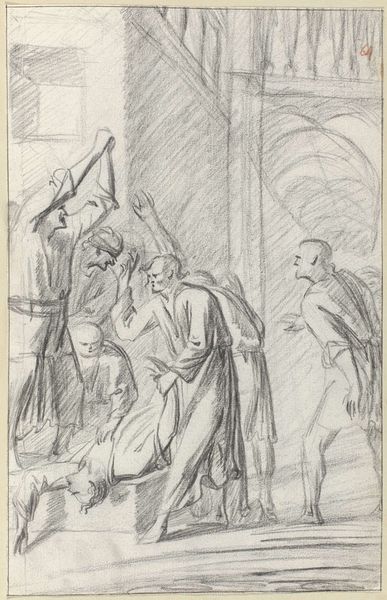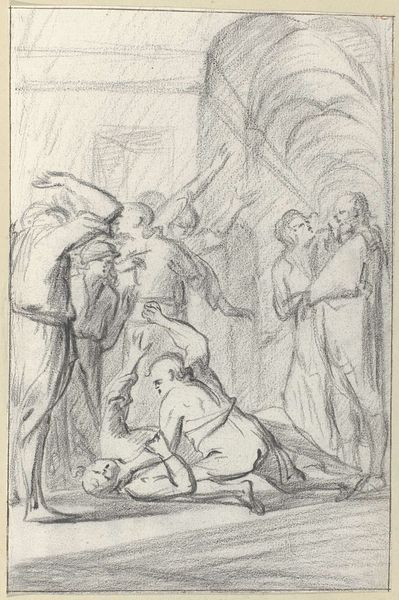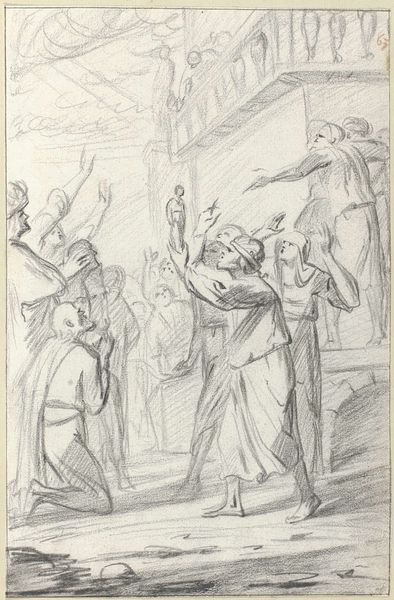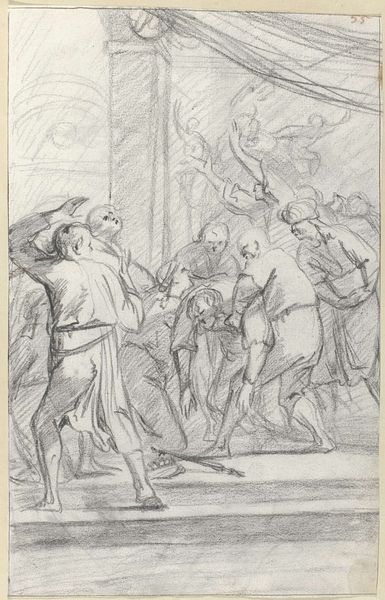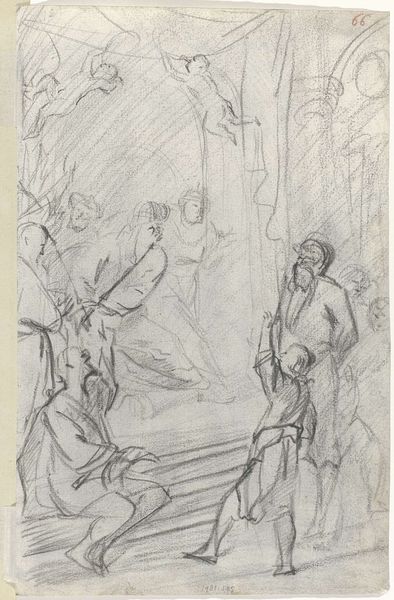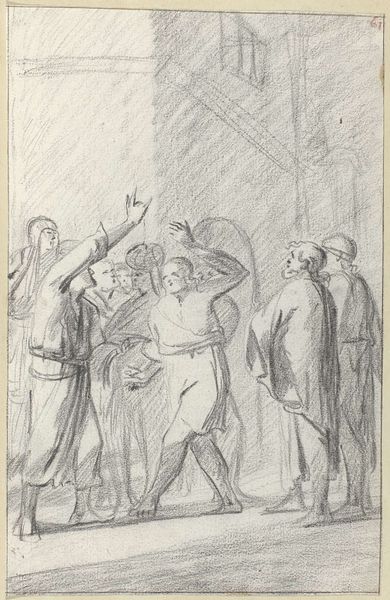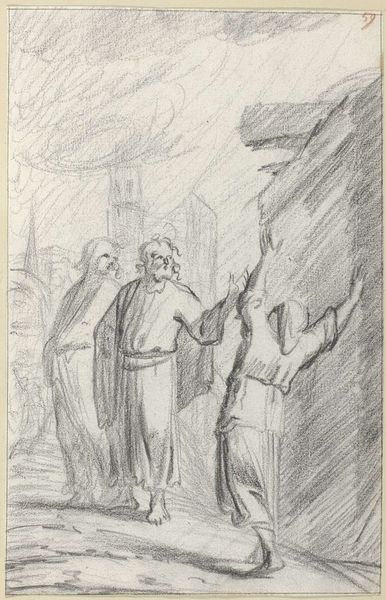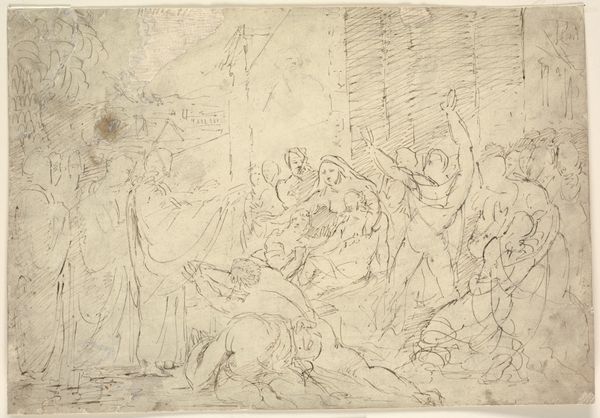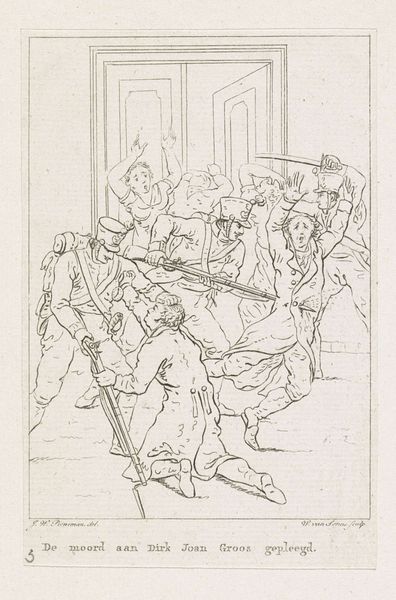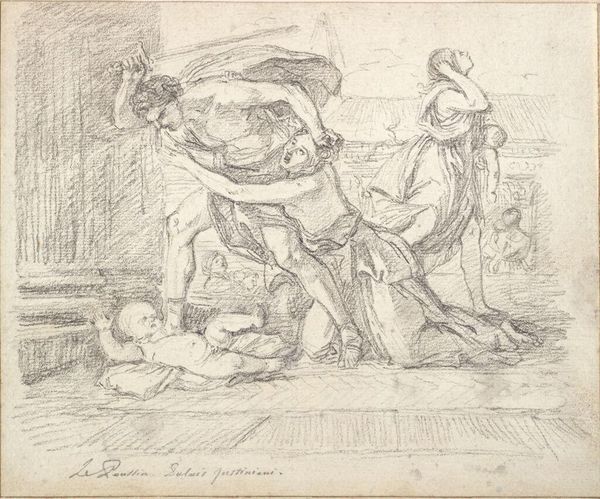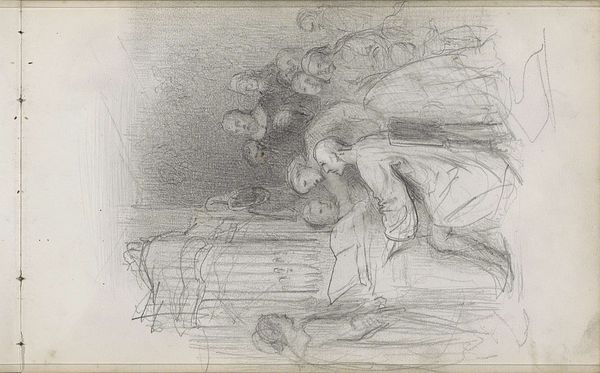
drawing, paper, pencil
#
drawing
#
baroque
#
paper
#
pencil
#
genre-painting
#
history-painting
Dimensions: height 303 mm, width 194 mm
Copyright: Rijks Museum: Open Domain
Curator: The frenetic energy of Pieter Fransz. de Grebber's "Paulus wordt buiten de muren van de stad gesleept" really grabs you, doesn’t it? It’s just a pencil drawing on paper, created sometime between 1610 and 1652, but the composition... it practically vibrates with tension. Editor: Vibrates is right. The rawness of the pencil strokes emphasizes the brutal nature of the event; you can almost feel the texture of the paper. The relatively loose technique gives it a immediacy which creates a dynamic impact on the viewer. How do the social dynamics play into his depiction? Curator: This drawing depicts the removal of St. Paul from within city walls and certainly aligns with historical genre paintings that were gaining popularity at the time. Considering de Grebber was a Catholic artist in a predominantly Protestant environment, it's fascinating to consider this work as an assertion of Catholic imagery and history within a changing society. His patrons definitely influenced these choices of subject. Editor: Absolutely. We must account for his artistic practice, the consumption of images during that time. The violence in this sketch, while seemingly straightforward, must be framed within that lens of religious and political tension, I wonder where the source materials came from. Who commissioned it? Who bought the drawings, and for what use? What narratives was this work being inserted into through circulation? Curator: The physicality is undeniable. The visible labor inherent in its creation is front and center: we are so used to associating drawing to fine art traditions, but drawings also acted as part of workshops. Editor: Very true. And what's equally intriguing is to observe how the historical narratives depicted are in dialog with existing sociopolitical contexts of seventeenth-century Netherlands. This image surely engaged in religious discourses that continue to shape society even now. Curator: The way the image makes you as a viewer complicit in an event—not as just a religious icon. Food for thought indeed.
Comments
No comments
Be the first to comment and join the conversation on the ultimate creative platform.
